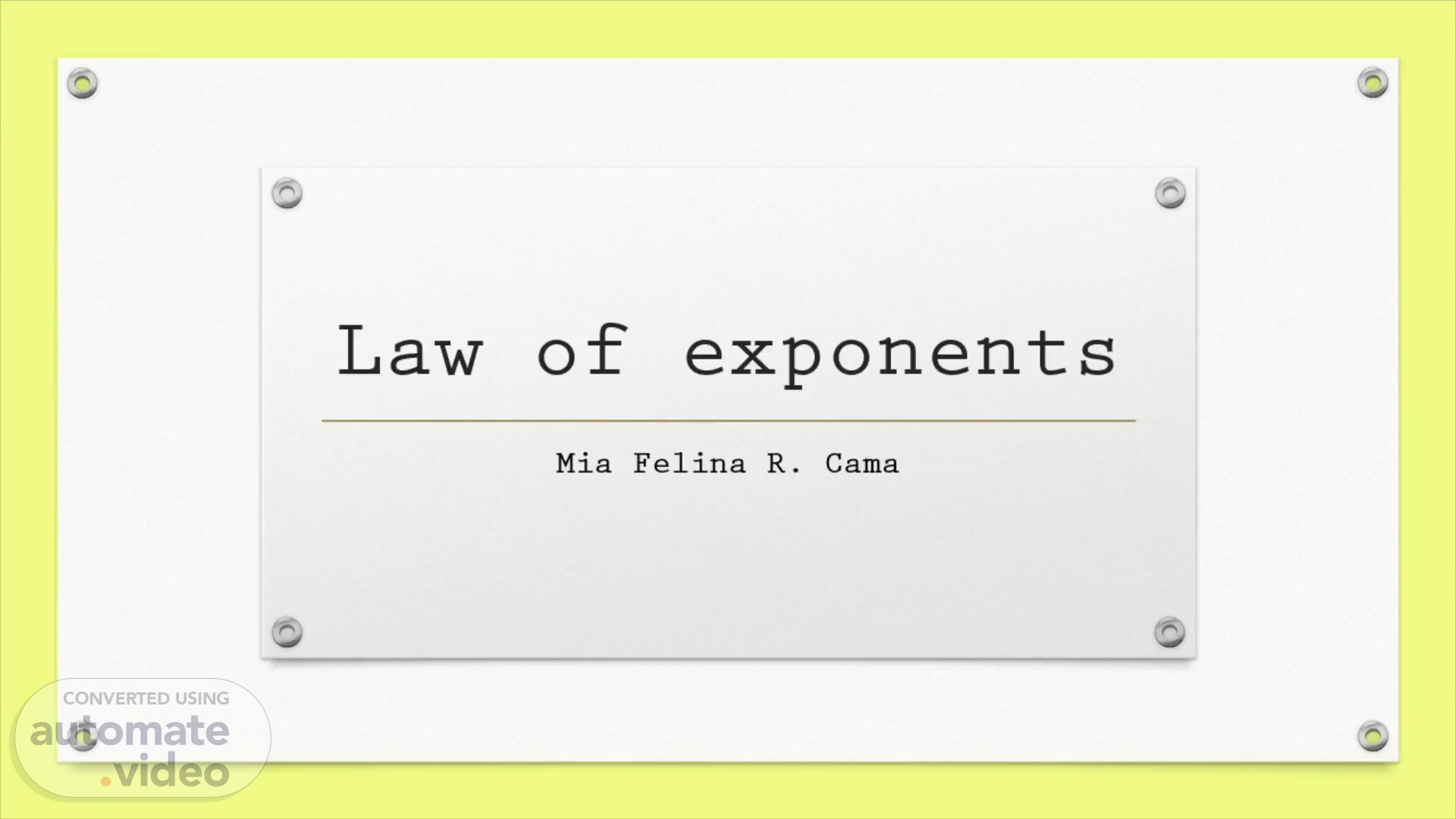Page 1 (0s)
Law of exponents. Mia Felina R. Cama.
Page 2 (7s)
Product rule. The Product Rule says that the derivative of a product of two functions is the first function times the derivative of the second function plus the second function times the derivative of the first function..
Page 3 (20s)
Example. If the two functions f(x)f(x) and g(x)g(x) are differentiable ( i.e. the derivative exist) then the product is differentiable and, ( fg )′= f′g+fg ’.
Page 4 (30s)
Quotient rule. A Quotient Rule is stated as the ratio of the quantity of the denominator times the derivative of the numerator function minus the numerator times the derivative of the denominator function to the square of the denominator function..
Page 5 (44s)
Example. If the two functions f(x)f(x) and g(x)g(x) are differentiable ( i.e. the derivative exist) then the quotient is differentiable and, ( fg )′=f′g−fg′g2.
Page 6 (54s)
Power of a Product. We use the power of a product rule when there are more than one variables being multiplied together and raised to a power. The power of a product rule tells us that we can simplify a power of a power by multiplying the exponents and keeping the same base..
Page 7 (1m 9s)
Example. Simplify (8x)4. The base is a product of a constant and a variable. Raise each by the given exponent. (8 * x)4 = (8)4 * (x)4.
Page 8 (1m 19s)
Power of a Quotient. The power of a quotient rule is often used to simplify algebraic expressions with exponents. The power of a quotient rule states that exponents outside of parentheses can be distributed to every term within the parentheses.
Page 9 (1m 33s)
Example. Consider : 42 (ok it is equal to 2 but for the moment let it stay as a fraction ) And let us calculate it with our rule first: ( 42)2=4^2/2^2=16/4=4.
Page 10 (1m 45s)
Zero Exponent. The zero exponent rule basically says that any base with an exponent of zero is equal to one..
Page 11 (1m 54s)
Example. X^2/X^2 = 1. Considering the division rule, when we divide numbers with same base, we subtract the exponents. X 2 /x^2 = x 2 – 2 = x 0 but we already know that x 2 /x 2 = 1; therefore x 0 = 1 Hence, we can conclude that any number, except zero raised to the zero power is 1..
